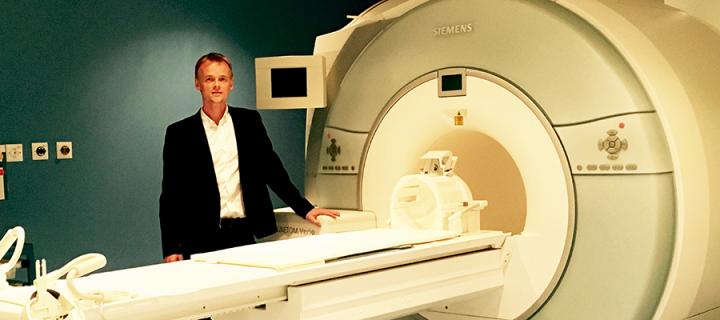Hearts and minds
Scott Semple’s career to date has been the very definition of interdisciplinary working in practice.

Currently a Reader in Medical Imaging and the Deputy Director of the Edinburgh Imaging: QMRI facility, Scott originally graduated with a physics degree from the University of Edinburgh in 1994.
However, over the intervening years, he found himself increasingly drawn into a profession where science, engineering and medicine intersect, gaining MScs in both bioengineering (University of Strathclyde) and medical imaging (University of Aberdeen). He subsequently completed a PhD in medical physics, which was the beginning of his career in clinical imaging research.
I originally chose the University of Edinburgh to study physics because of the science faculty’s outstanding reputation. Spending four years as a student in this magnificent city gave me lots of opportunities. A real academic highlight for me was during my first year, where I studied forensic medicine in addition to maths and physics. This fascinating course got me excited about applied anatomy and physiology, ultimately leading to my subsequent postgraduate studies.
Award-winning
Scott returned to Edinburgh in 2008, having been recruited to lead the MRI research facility with the Clinical Research Imaging Centre (CRIC). In May 2017, the Edinburgh Imaging team won the Imaging Team of the Year award from the British Medical Journal for the SCOT-HEART project.
Interdisciplinary approach
The success of SCOT-HEART is partly down to the team’s interdisciplinary approach, with radiologists, cardiologists, physicists, clinics staff and radiographers all working together to deliver best clinical and research management of patients with a wide range of cardiovascular diseases.
The SCOT-HEART project has developed a method of spotting signs of heart disease using CT scans. Known as computed tomography coronary angiography (CTCA), the technique is now the preferred method of carrying out initial checks on patients arriving at hospital with chest pains. The approach has cut the number of deaths from heart disease by half, compared with people who underwent standard diagnostic tests.
Scott explains more about the background to Edinburgh Imaging’s ongoing success.
“The imaging facility is inherently multi-disciplinary,” he says. “Our facility is a unique partnership between the University and NHS Lothian - we house the NHS Lothian PET-CT scanner. We also work closely with the Centre for Cardiovascular Science, the Centre for Inflammation Research, the Centre for Reproductive Health, the Centre for Clinical Brain Sciences, and other University of Edinburgh and NHS Lothian departments. The BHF Centre for Cardiovascular Sciences has opened up a collaborative network with other BHF Centres of Research Excellence, and we work closely with University of Oxford on a number of cardiovascular and liver imaging projects for example, mostly involving non-invasive tissue characterisation using MRI.”
Musical antidote
Outside of academia, Scott has been an amateur musician for nearly 30 years now, which he finds is the “perfect antidote” to his busy days at Edinburgh Imaging. He urges students who are new to the city to make their best of their time while in Edinburgh.
Don’t take this brilliant range of options for granted. Now is the time in your life when you will most get the chance to make the most of what Edinburgh has to offer!

